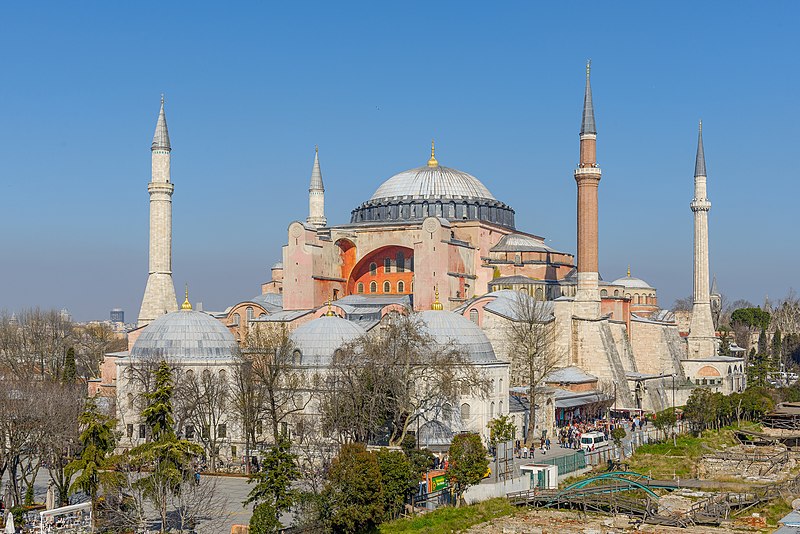聖索菲亞大教堂是位於現今土耳其伊斯坦堡的宗教建築,有近一千五百年的漫長歷史,因其巨大的圓頂而聞名於世,是一幢「改變了建築史」的拜占庭式建築典範。 大教堂以一位名為索菲亞的聖人而命名,因此稱為「聖索菲亞」。這個詞在希臘語里的意思是上帝智慧





Although the actual removal of plaster took only one year, further seasons of work were required to consolidate and restore the mosaic. Publication of the discovery of the mosaic created a sensation in the art world. Never before had a mosaic of this artistry been seen and the level of technique surpassed anything seen before. The discovery of the mosaic was a sad reminder of how much of Byzantine monumental art has been lost over time.
Although the exact date of the creation of the mosaic is unknown. There are no surviving Byzantine writings that mention it and Byzantine artists usuially did not sign their works. Based on style it is possible to attribute the mosaic to a specific period of Byzantine art from late 12th to mid 13th centuries. It is believed that the mosaic either dates from 1185 – 1204 (in 1204 the city fell to Crusading armies ending all artsistic patronage in the city) – or just after 1261 when the Byzantines regained their capital from the Latin invaders.

Hagia Sophia (from the Greek: Ἁγία Σοφία, "Holy Wisdom"; Latin: Sancta Sophia or Sancta Sapientia; Turkish: Ayasofya) is a former Greek Orthodox patriarchal basilica (church), later an imperial mosque, and now a museum in Istanbul, Turkey. From the date of its construction in 537 until 1453, it served as an Eastern Orthodox cathedral and seat of the Patriarchate of Constantinople except between 1204 and 1261, when it was converted to a Roman Catholic cathedral under the Latin Empire. The building was a mosque from 29 May 1453 until 1931. It was then secularized and opened as a museum on 1 February 1935.[
The Church was dedicated to the Wisdom of God, the Logos, the second person of the Holy Trinity, its patronal feast taking place on 25 December, the commemoration of the Birth of the incarnation of the Logos in Christ.[] Although sometimes referred to as Sancta Sophia (as though it were named after Saint Sophia), sophia being the phonetic spelling in Latin of the Greek word for wisdom, its full name in Greek is Ναός τῆς Ἁγίας τοῦ Θεοῦ Σοφίας, "Shrine of the Holy Wisdom of God".[] Famous in particular for its massive dome, it is considered the epitome of Byzantine architecture[ and is said to have "changed the history of architecture."[ It remained the world's largest cathedral for nearly a thousand years thereafter, until Seville Cathedral was completed in 1520. The current building was originally constructed as a church between 532 and 537 on the orders of the Byzantine Emperor Justinian and was the third Church of the Holy Wisdom to occupy the site, the previous two having both been destroyed by rioters. It was designed by the Greek scientists Isidore of Miletus, a physicist, and Anthemius of Tralles, a mathematician.










